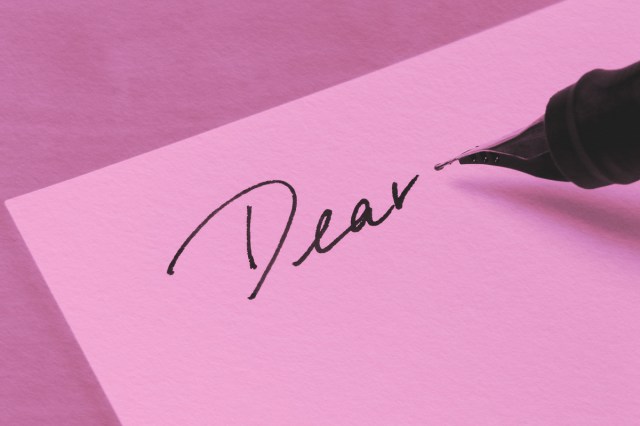
In an early job, I got feedback that my email correspondence needed to be more sophisticated. I was firing off, “Hey, do you have that expense report?” while my boss preferred the formalities of a traditional letter, including a salutation (a “Dear” and title/name combo) and a complimentary closing (such as “Best regards” or “Sincerely”). That level of formality has dropped out of all but the most professional email communications, but the etiquette persists for handwritten letters. Where did “Dear” come from, what does it mean, and what other options are there for conscientious email writers?
The word “dear,” from the eighth-century Old English “deoare,” originally meant something was precious or costly, but evolved into calling out something/someone as special. (That first usage still exists, but it’s less common.) “Dear” was used, starting around the 14th century, as a salutation for only the most intimate letters: “Dearest sister,” “To my dear friend,” etc. The phrase “dearly beloved” was introduced in a 1662 Bible translation called the “Book of Common Prayer,” and it became a traditional component of wedding ceremonies (and the classic opener of a Prince tune), furthering the association of “dear” with loved ones.
Around the 17th century, the term became the standard opening for most polite communication and a way to start any letter as a show of respect: “Dear Mr. Smith,” “Dear Sir or Madam,” etc. Eventually we moved on from regular letter writing as the primary mode of communication between family and friends, and in the 20th century, people wrote more memorandums than love letters. Once email became standard, some people retained the formality of the written structure, and others took the opportunity to let the “To” and “From” fields do the work for them — no salutations or closings needed.
But many people — including the Washington Post’s Miss Manners — aren’t ready to let go of “dear,” no matter the format. Career experts recommend using “dear” as a salutation in formal email correspondence, such as cover letters, but only when you know the recipient’s name; the impersonal “Dear Sir or Madam” is definitely extinct. (A Google or LinkedIn search can help you out with names.) For standard missives between colleagues, consider starting the first message with “Hi [name]” and closing with your name as well. Future replies in the chain don’t need a salutation.















